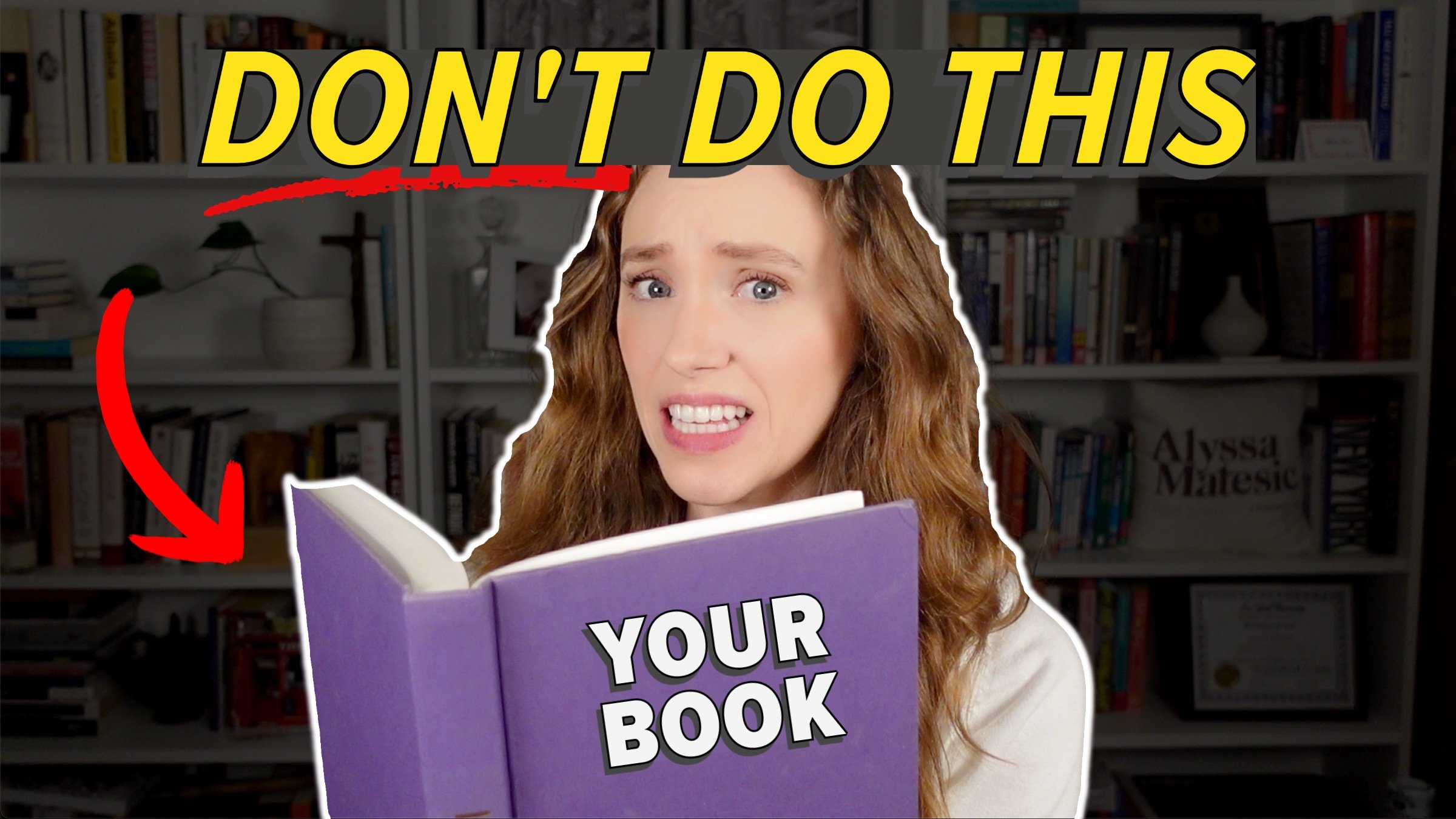How to Revise a Novel in 5 Painless Steps
HIT PLAY OR READ THE POST BELOW:
For many authors, revising a draft of your novel can feel more painful than pulling teeth. I totally get it — you've put so much time, energy, and effort into it that you don't want to just have to break it down and start all over again. But as a professional developmental book editor, I truly feel that revisions are where the magic happens, and I personally love helping authors dismantle their stories and then build them back up into something even stronger.
I think a lot of the fear of the revision process comes down to feeling overwhelmed and not knowing where to start, so today, I'm going to walk through how to revise a novel in five simple steps so that you no longer fear or dread this process but embrace it.
Step 1: Set It Aside
The first step in how to revise a novel is to set it aside — so it's kind of an anti-step. After you've completed a draft of your book, it is essential to put it away for some period of time and not look at it.
That's because you are so, so deep in the story at this point that you simply cannot see the forest from the trees. You're way too close to it, and you need to get your head out of the book for some period of time to refresh it. That way, when you do return to it, you have a clear head — because it's only then that you will be able to tackle these revisions productively.
I recommend physically putting the manuscript away. If it is saved on your computer, put it in a hidden folder somewhere or lock it with a password — just make sure you don't forget that password, so write it down! I wouldn't look at your manuscript draft again for a minimum of a couple of weeks, if not a month.
During this time, get your head in another project. If you're working on another book, maybe you write some of that manuscript in the meantime. Or, if you have another project you've been wanting to do, work on that. Or don't think about anything at all and just relax — you've already accomplished so much. Take this breather. You deserve it after all of that work!
This is going to give your head time to recalibrate, and I promise you're going to be able to return to your story with so much more energy and see the book for what it is so much clearer.
Step 2: Reread and Self-edit
Now that you have taken that time away from the manuscript, it's time to go back to it with fresh eyes. I want you to reread your draft and note things that you want to develop.
Perhaps during that period you were not working on the draft, you thought of a new backstory idea that you want to implement for one of your characters, or perhaps you want to develop a big conflict scene that you felt was lacking. Maybe you want to sprinkle in more setting details so that the backdrop of the characters’ world is more vivid. As you go back through the draft, I guarantee that you're going to find things you want to work on.
During this process, you're likely going to identify some bigger and thornier issues that you're not sure how to work out or how to address. We'll get back to how to tackle all of that, but for now, do what you can with the story on your own.
Before you dive in to the reread, you might want to familiarize yourself with some common mistakes to catch while you're self-editing your manuscript.
Step 3: Get Feedback
Now that you have set the manuscript aside, reread it, and self-edited to some degree, it is time for you to get feedback. This is the next critical step in how to revise a novel.
There's going to come a point in your self-editing process where you get stuck and you just don't know what to do with the draft. Maybe you know there are certain issues, but you don't know how to fix them. Or you know the draft isn't perfect, but you don't know what those issues are. In any case, this is where you need to lean on someone that you trust to give you external feedback and suggestions for how to develop the story.
This part of the revision process looks different for different authors. Some work with beta readers who give them very extensive and productive feedback. Others have relationships with critique partners, where they exchange their manuscript with their critique partner and give feedback to each other. And some authors hire professional developmental editors to provide feedback.
Regardless of who you have solicited to give you feedback on the book, make sure it is a trusted, qualified source — someone who has editorial experience, ideally; at a minimum, someone who understands and reads your genre extensively. Getting poor feedback or feedback from someone who doesn't understand what you are trying to accomplish with your book is going to be counterproductive and a waste of everyone's time. At worst, it could confuse you or lead you to make changes to the manuscript that actually aren't in its best interest.
It’s crucial that you find the right person to give you editorial feedback. And once you find that person, know that it isn't expected for you to agree with everything that they say, and you're not expected to take every single suggestion that they give you. Remember, this is still your story at the end of the day, and any suggested revisions should only be in the interest of elevating your story and helping you achieve your vision for it. So, if any suggestions just don't jive with you or feel like they're not helping you accomplish what you're trying to do with the book, ignore them.
But, hopefully, you get a lot of helpful and actionable insights on your book that you couldn't see for yourself, and you can now go back to it and make those suggested changes so that the story overall is much more sound.
Step 4: Set a Game Plan
The next step in how to revise a book is to set a game plan for the changes you want to make. Now that you have your feedback from your trusted source, you need to figure out how you’re going to implement it in the manuscript draft.
I recommend being very intentional with your revisions. It can be helpful to literally write down a checklist of all of the things you want to accomplish in this next draft, including the specific areas you want to target. Do you need to quicken the pace of the plot? Or do you need to streamline your POVs? Do you need to add or omit a character? What scenes do you need to develop or cut out entirely?
It can be helpful to distill down your goals for the revision into these very specific bullet points, because this makes them actionable, achievable goals that you can check off a list. A developmental edit can feel very intimidating and overwhelming, so breaking it down into bite-sized pieces can make it a lot easier to get through.
Now, just as there is no one way to write a book, there is no one way to revise a book, and there are different revision strategies that authors take. Some go through the story chronologically and implement the revision scene by scene in a linear fashion, while others target their revisions based on the issue they're trying to address, hopping around the manuscript to fix that problem and then moving on to the next problem from there.
Step 5: Reframe Your Mindset
Unfortunately, revisions are not a one-and-done deal. You're not just going to do one pass through the manuscript and then it's going to be ready to be published.
It is truly an iterative process, and any novel that's published successfully, whether it's through a traditional publisher or self-publishing, has gone through extensive number of revisions — including developmental edits, copy and line edits, and proofreading. So, the sooner that you embrace revisions as a necessary part of your process, the better off you're going to be, and you're going to be a much stronger writer.
Try to think of revisions as a place of exploration and discovery, where your story truly comes into its own and blossoms. I promise that all of this effort you're putting into it is going to be worth it. You are going to feel so much more confident and proud of your draft, and the story is not only going to be so much more polished, but also better reflect your vision and better resonate with readers.
I've worked with hundreds of authors over the course of my career, and I have never had one author come to me and say they regretted going through revisions or that their novel somehow became worse as they went through the revisions. It truly can only get better and better from here.
Now that you know how to revise a novel seamlessly, I hope you see it as an exciting and necessary component of your writing journey to achieve your story's ultimate potential. Thanks so much for reading and happy writing!






